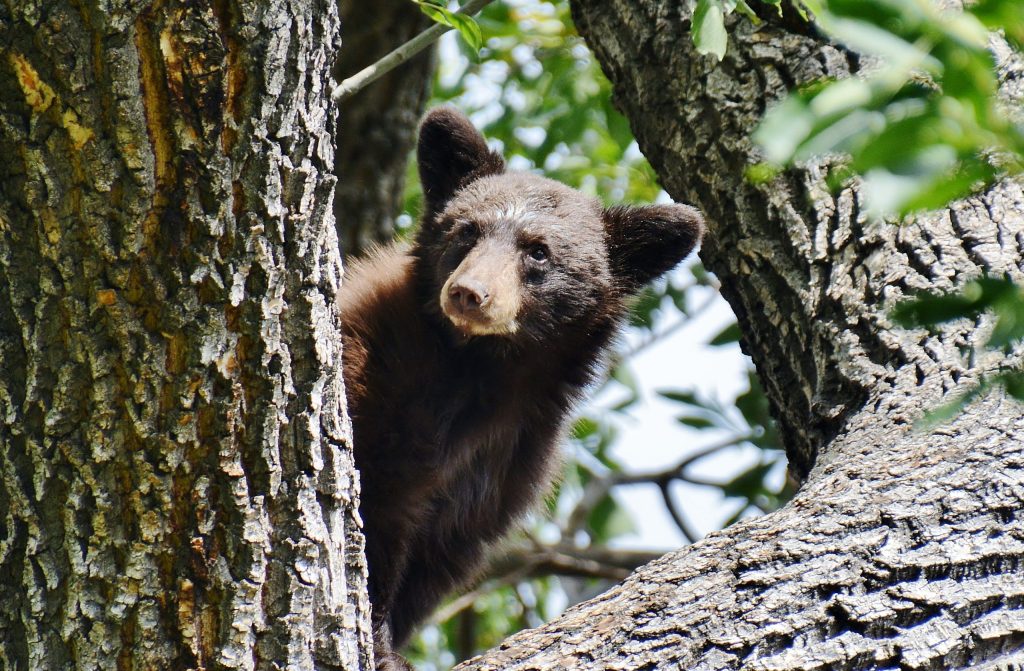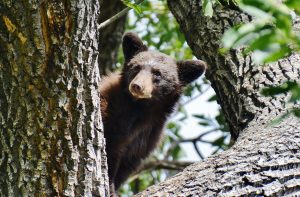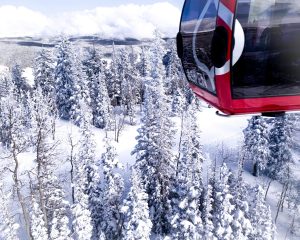CPW reminds residents to stay alert as wildlife activity increases this fall

Courtesy/ Colorado Parks and Wildlife
As temperatures drop and leaf-peeping season unfolds in vibrant shades of yellow, orange and red, encounters with wildlife tend to increase. Fall brings heightened animal activity due to migratory movements, winter preparations, the onset of breeding season and reduced daylight — factors that can also make some animals more aggressive.
“This time of year, with it being the rut, animals — especially male animals — are going to be a little bit more territorial because they see you as a threat,” Colorado Parks and Wildlife (CPW) Public Information Officer Rachael Gonzales said.
“Animals at this time of year are moving, so they’re slowly making that movement from higher elevations down to those lower elevations where winter habitat is,” she later added. “So you may see more animals, especially across roadways ,(and should) make sure that you’re paying attention.”
Here are some tips for safely coexisting with wildlife this fall season.
Staying safe outdoors
To reduce the risk of wildlife encounters, CPW recommends recreating during the day with a companion or in groups. Stay alert, keep children close and carry items such as a walking stick, noise maker or small rocks to throw. Dogs should remain leashed or under voice control.
Avoid chasing, approaching or harassing wildlife. If there is a calf or cub in the area, leave quickly. Watch for signs of aggression in wild animals and always maintain a safe distance.
“That’s not saying that if you’re at a safe distance, you can’t stop and enjoy them,” Gonzales said. “But we don’t want to stay so long that we agitate them and make them feel threatened and want to come after us.”
Moose
Colorado is home to about 3,000 moose, the state’s largest big game animal.
With few natural predators, moose are less fearful of humans than other animals and may even approach people or homes. Each year, more people are attacked by moose than any other species of wildlife in Colorado, according to CPW.
There have been several human-moose incidents in Colorado in 2025. At least one person was trampled in attacks in conflicts in Park and Routt counties earlier this year. In May, a man shot and killed a moose in Grand Lake after it charged and attacked his partner.
The Aspen-Sopris Ranger District temporarily closed part of the Maroon Lake loop trail at Maroon Bells Scenic Area near the end of August after a bull moose became agitated in several close encounters with humans and dogs, according to the U.S. Forest Service – White River National Forest.
Carbondale residents have also reported several moose sightings on social media over the last few months, from on the green at Golf at River Valley Ranch to backyards in residential neighborhoods.
From late September to November — during the moose breeding season — bulls become more territorial and aggressive. National parks recommend maintaining at least 75 feet of distance from moose. Like deer and elk, moose lower their heads when feeling threatened. Other signs of aggression include pinning their ears back, raising the hair on the back of their necks and chomping and licking their lips, according to Gonzales.
“When you’re starting to see these agitations, the best thing to do is to not panic and just remove yourself from the situation completely, making sure as you’re doing that that you’re giving them a good exit route,” Gonzales said.
If a moose charges, put a solid object — like a tree, rock or car — between yourself and the animal. Remember that moose can swim up to six miles per hour and run up to 35 miles per hour.
“The reality is, whether you encounter an animal like a moose, elk, or a deer in town or at your home, how you’re going to treat it is going to be no different than how you would treat a situation if you were to run into them in the wild,” Gonzales said.
Bears
Black bears, Colorado’s largest carnivores, are active from mid-March to early November. Between March 1 to Sept. 30, CPW recorded approximately 264 bear sightings and encounters in Garfield County. Of those, around 93% occurred in Glenwood Springs or in the Roaring Fork Valley. About 48% of the reports involved property damage, while the rest were sightings.
Most human-bear conflicts are food-related, stemming from garbage, pet food, bird seed and improperly stored human food. In the fall, bears eat for up to 22 hours a day, consuming around 20,000 calories daily to prepare for hibernation. A bear’s drive to eat can override its natural fear of humans, potentially leading to dangerous situations. When bears find food sources near dumpsters, campgrounds or homes, they return and may have to be euthanized if they become habitual offenders, according to CPW.
“Bears here in Colorado are not true hibernators, so they can actually wake up throughout different periods of the winter months, but they’re still going to pack on as many pounds and calories as they possibly can,” Gonzales said. “When they can’t find natural food stores, they’re going to keep moving.”
According to CPW, if a bear looks up or changes behavior when a human is nearby, the person is too close. National parks often recommend staying at least 150 feet — the length of four school buses — away from black bears.
Although not naturally aggressive, black bears will defend themselves if they feel threatened. Signs of aggression include huffing, jaw-popping and paw-stomping.
When outdoors, consider carrying deterrents like a whistle, bear spray or a noisemaker such as a can filled with coins or rocks.
If a bear approaches a home, residents should not attempt to approach it. Instead, they should scare it away with loud noises like yelling, clapping or blowing a whistle. To avoid attracting bears, secure trash, bring in pet food and bird seed, pick up fallen fruit and keep accessible doors and windows locked. Avoid leaving anything with an odor in vehicles.
“If we’re encouraging these bears and giving them this food source, whether it be trash or grill bits, it’s going to be easier for them to get back,” Gonzales said. “Instead of them moving back up into areas where there’s no roads, they’re going to stay in those neighborhoods, because that’s where their easy meal is.
“That’s when we tend to see bears getting hit by cars, because they are so used to getting food from humans that they’re going into these neighborhoods and crossing busy roads and streets,” she added.
If a bear continues to approach despite warnings, it might be food-conditioned. Throw small rocks, yell and use bear spray when it is within 40 feet. If attacked, CPW advises fighting back with anything available.
Visit cpw.state.co.us/living-wildlife for more information on safely coexisting with wildlife.










